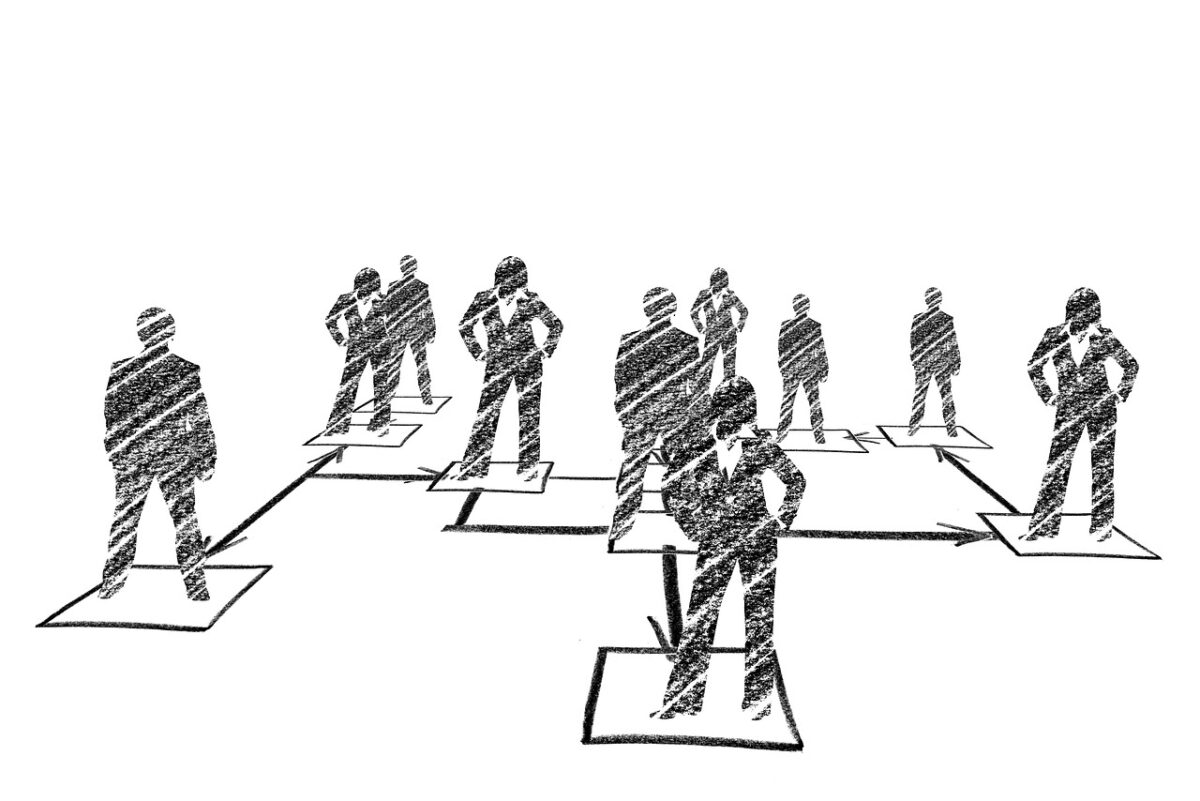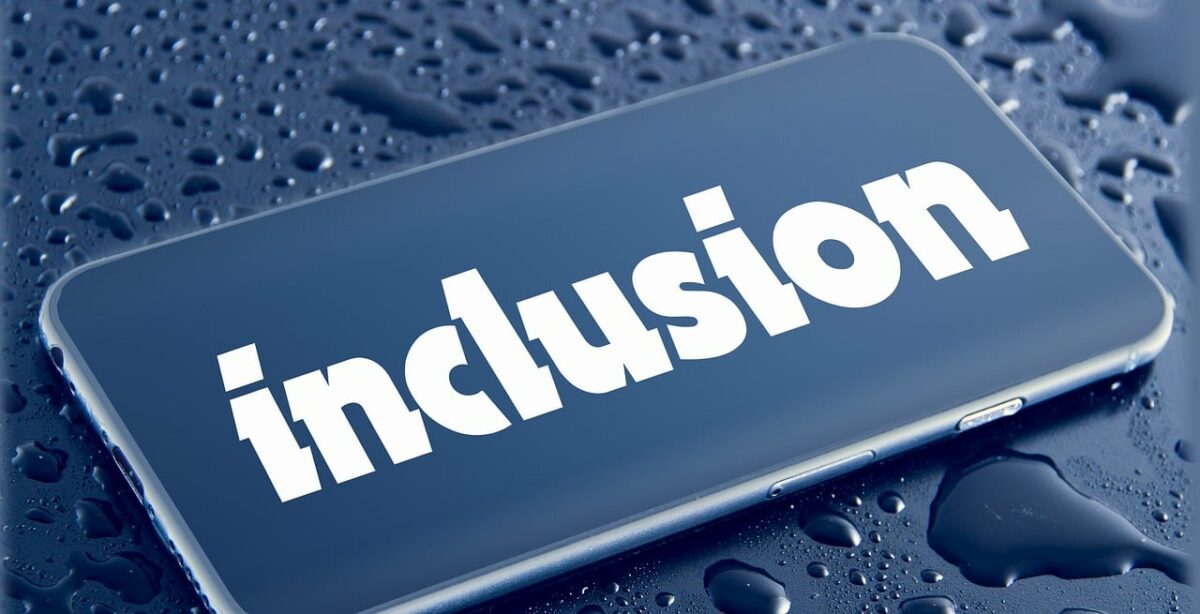What Is The First Step In Crafting An Effective Job Description?

Crafting an effective job description is vital in attracting the right talent and setting the stage for employee success within your organisation. This blog delves into the best practices and first steps for writing job descriptions, from conducting thorough job analysis to ensuring your descriptions align with performance evaluations, ensuring you attract and retain top talent efficiently and inclusively.
Quick Links:
- Understanding The Role Of UK Job Descriptions
- Conducting A Job Analysis – The First Critical Step
- Best Practices In Job Description Writing
- Beyond The Basics – Enhancing Your Job Description
- Utilising Job Descriptions For Performance Reviews
- Resources For Finding Your Ideal Candidate
- Writing Job Descriptions: First Step FAQs
Highlights And Key Takeaways:
- Job analysis is the first step in crafting highly effective job descriptions and gathers, documents, and analyses information about a job’s requirements and responsibilities.
- To conduct job analysis, you should gather information from job holders and supervisors, utilise observation and interview techniques, and assess the collected data.
Understanding The Role Of UK Job Descriptions
In the competitive and dynamic UK job market, the significance of job descriptions extends far beyond a mere listing of duties and requirements. A job description serves a dual purpose: it is a cornerstone in the hiring process and a critical tool for performance evaluation. This multifaceted role underscores employers’ need to craft a great job description, ensuring it accurately reflects the position and aligns with the company’s objectives and values.
The Dual Purpose of Job Descriptions
Hiring Process: A well-constructed job description is the first interaction job seekers have with your company. It serves as a job posting on various platforms, from your company’s career page to popular job boards, playing a pivotal role in attracting suitable candidates. A great job description outlines the role’s responsibilities, the skills and qualifications required, and the company culture. This clarity helps filter applicants and draw in those who not only possess the required skills but also share the company’s values, significantly streamlining the hiring process.
Performance Evaluation: Beyond hiring, job descriptions are instrumental in assessing employee performance. They provide a benchmark against which an employee’s contributions and achievements can be measured. This is particularly crucial for ensuring fairness and objectivity in performance reviews, facilitating discussions around career progression, and identifying areas for development.
The Impact of a Well-defined Job Description
The impact of a well-defined job description on attracting the right candidates cannot be overstated. Job seekers today are looking for roles that match their skills and aspirations. A great job description acts as a beacon, drawing in those job seekers whose capabilities and career goals align with the position offered. It’s not just about listing requirements but also about selling the company to prospective candidates – highlighting unique selling points, culture, and opportunities for growth and development. The more precise and engaging a job description is, the more likely it is to resonate with the right audience, making your job ads stand out on a crowded job board.
Legal Considerations and Compliance in the UK Job Market
Legal considerations and compliance are significant in crafting job descriptions in the UK. Employers must ensure their job postings are free from discriminatory language and comply with UK employment laws. This includes being mindful of the Equality Act 2010, which outlines the importance of inclusivity in job advertisements and the workplace. A great job description attracts suitable candidates and adheres to these legal frameworks, safeguarding the company against potential legal challenges.
To delve deeper into the nuances of crafting effective job descriptions that serve both these purposes, I encourage readers to explore the blog What Is A Job Description? Our recruitment resources provide further insights into the art and science of developing job descriptions that attract the right talent while ensuring legal compliance and facilitating performance evaluations. By understanding these principles, employers can refine their hiring process, ensuring they attract and retain the best candidates, ultimately contributing to the organisation’s success.
Conducting A Job Analysis – The First Critical Step

Conducting a job analysis is the foundational step in creating a robust job description, a process that unfolds through understanding what job analysis entails, mastering the art of conducting an effective job analysis, and adeptly translating this analysis into a clear and comprehensive job description.
What is Job Analysis?
Job analysis is a systematic process HR management employs to gather, document, and analyse information about a job’s requirements and responsibilities. It serves as the cornerstone for effective HR practices, particularly in recruitment and selection. Our job description guide begins with understanding what job analysis entails, as this process is crucial in developing the foundation needed to create accurate job descriptions and reflect the role’s true nature.
The primary objective of job analysis is to clearly understand the job’s duties, the soft and technical skills required to perform these duties successfully, and the conditions under which the work is performed. This in-depth insight aids Hiring Managers or employers in crafting job descriptions that accurately reflect the essence of the role, ensuring that all parties involved have a clear idea of what the job entails.
Furthermore, job analysis plays a pivotal role in forming the foundation of a job description. By thoroughly analysing the job, employers can delineate the key responsibilities, skills, and qualifications needed, making the job appealing to the right candidates. This clarity not only enhances the recruiting efforts by attracting suitable applicants but also ensures that the job description is a reliable reference point throughout the employment lifecycle, from hiring to performance management.
In summary, job analysis is indispensable for HR management, providing the necessary groundwork to create job descriptions that accurately capture the essence of a role. It ensures that both the Hiring Manager or employer and potential candidates clearly understand the job’s requirements, facilitating a more effective and efficient recruitment process.
How to Conduct a Job Analysis
Conducting a job analysis is a meticulous process that requires a strategic approach to gather comprehensive information about a role. A clear understanding of the job is pivotal for crafting a job description that attracts the right candidate. The steps involved in conducting a job analysis encompass four key activities:
- Gathering Information: The first step is identifying and utilising various sources of information about the job. This typically includes current job holders who perform the role daily and have firsthand experience of its demands, and supervisors who oversee the position and can offer insights into the broader context and performance expectations. These stakeholders are invaluable for providing a holistic view of the role.
- Observation and Interview Techniques: Employing observation and interview techniques allows for a deeper dive into the job’s nature. Observing current job holders performing their duties offers a direct look at the tasks and the environment in which they are carried out. Complementing this with interviews, where job holders and supervisors are asked structured questions, helps to fill in any gaps and ensure a comprehensive understanding of the role.
- Analysing Job Duties, Responsibilities, and Required Skills: The information collected is then analysed to identify the job’s core duties and responsibilities and the skills necessary to perform them effectively. This analysis must also consider the educational qualifications and experience needed, ensuring that the job description targets the right candidate and aligns with the current team’s capabilities and the organisation’s goals.
- Tools and Resources to Facilitate Job Analysis: Various tools and resources can support the job analysis process, from software that helps organise and analyse data to frameworks that guide the structuring of interviews and observations. These tools ensure the job analysis is conducted efficiently and yield reliable and actionable insights.
The outcome of a thorough job analysis is a clear understanding of the role, which is essential for creating a precise job description and subsequent recruitment of a new hire. For employers looking to delve deeper into the specifics of defining job roles, What Are Job Duties is an invaluable resource. This blog offers further insights into identifying and articulating the critical responsibilities of a position, enhancing the overall recruitment and onboarding process.
Translating Analysis into a Job Description
Translating the rich data obtained from job analysis into a compelling job description is critical in attracting the right talent. This process involves distilling the information into an informative and engaging format for potential candidates. Here’s our step-by-step guide to leveraging the insights from job analysis to write an effective job description:
- Define the Job’s Purpose: Begin by briefly stating the job’s overarching goal within the organisation. This helps candidates understand the role’s significance and how it contributes to the company’s broader objectives.
- Crafting a Job Summary: A job summary should encapsulate the essence of the role in a few sentences, providing a snapshot of the key duties and the impact the position has. This summary sets the tone for the job description, drawing in candidates by highlighting the role’s unique opportunities.
- Identifying Key Responsibilities: Use bullet points to list the job’s main responsibilities. This structure makes the information easily digestible and allows candidates to quickly assess their suitability for the role. Focus on including duties that reflect the core of the position, ensuring that candidates clearly understand what will be expected of them.
- Job Specifications (Skills, Qualifications, Experience): Detail the specific technical skills, educational background, and experience required to excel in the role. Distinguish between ‘must-haves’ and ‘nice to haves,’ or preferred qualifications, to widen your pool of potential candidates without compromising quality. This section should also highlight any new skills the role may require in the future, indicating the potential for growth and development within the position.
- Concise Job Title: Ensure the job title is concise and accurately reflects the nature and level of the job. A clear title is crucial as it is the first thing job seekers will see, and it plays a significant role in attracting their attention.
By following these steps, employers can create a job description that provides a clear and comprehensive overview of the role and engages and attracts the right candidates. For further guidance on crafting the perfect job description, I encourage you to explore our blogs What To Include In A Job Summary When Writing A Job Description and How To Write A Job Specification. These resources offer in-depth insights into fine-tuning your job summary and specifications, ensuring your job description stands out in a competitive job market.
Best Practices In Job Description Writing

Best practices in job description writing are pivotal in ensuring that your job postings attract a wide range of qualified candidates and reflect your company’s commitment to diversity and inclusion. Here are key guidelines to help you craft effective and inclusive job descriptions:
Importance of Clear, Concise, and Inclusive Language
Using clear, concise, and inclusive language is not just about ticking a box for diversity; it’s about making your job postings accessible and appealing to as broad an audience as possible. Inclusive job descriptions are free from internal terminology that might be unclear to external applicants and from gendered language that could dissuade candidates from applying. Instead, they use gender-neutral language and terms that resonate with diverse teams, promoting workplace diversity from the first point of contact.
Making Your Job Description Stand Out
Weave your company culture and values throughout the text to make your job description stand out. This helps candidates understand if they’re a good fit for your organisation and strengthens your employer brand in the job market. Highlight stories or examples demonstrating your commitment to building diverse teams and fostering an inclusive work environment. By doing so, you’re not just listing a job opening but inviting candidates to become part of something bigger.
Avoiding Common Pitfalls
A common pitfall in job description writing is setting unrealistic requirements, which can intimidate potential applicants and unnecessarily narrow your pool of candidates. Similarly, job title and description ambiguity can lead to confusion and deter applicants. Whether intentional or not, discrimination is another critical area to be mindful of. Avoid using gendered language and ensure that your requirements do not inadvertently exclude certain groups. Inclusive job descriptions are a powerful tool in combating these issues, ensuring your postings are welcoming to all.
To delve deeper into how to effectively incorporate your company’s ethos into your hiring process, I encourage you to explore our blog How To Infuse Company Culture And Brand Values Into Your Job Descriptions. This resource offers invaluable insights into aligning your job postings with your corporate identity, ensuring that each description not only seeks a new hire but also serves as an ambassador for your brand values and commitment to inclusion.
Beyond The Basics – Enhancing Your Job Description

Moving beyond the foundational elements of job description writing, enhancing your job postings for maximum impact involves strategic efforts that can significantly improve their reach and appeal. Here’s how you can elevate your job descriptions to attract top talent effectively:
Incorporating Keywords for SEO and Greater Visibility
Integrating relevant keywords is essential to ensure that your job postings are easily discoverable by job seekers. These keywords should include specific job titles, skills, and industry terms that potential candidates might use in search engines. By optimising your job descriptions with these keywords, you increase the likelihood of your postings appearing in search results, thus reaching a wider audience of external candidates.
The Role of Competitive Analysis in Setting Salary and Benefits
Conducting a competitive analysis of salary and benefits within your industry can provide invaluable insights that help you position your offer attractively. Understanding what competitors are offering allows you to set compensation packages that are competitive yet sustainable for your organisation. This aspect of job description enhancement is crucial in attracting top talent, as prospective employees often compare offers from various companies. Aligning your salary and benefits with market standards demonstrates your commitment to fairness and equity, making your company more appealing to job seekers.
Inviting Feedback on Job Descriptions from Current Employees
For a realistic and authentic perspective on the role you’re advertising, soliciting feedback from your current team is invaluable. Employees already in other positions or have been through the hiring process can offer insights into how the job description matches the reality of the job and the company culture. This feedback can help refine the job posting to ensure it accurately reflects the role and appeals to the right candidates. Moreover, involving current employees in the creation process enhances the job description and fosters a sense of inclusivity and team spirit within your business.
To delve deeper into creating compelling job ads and leveraging platforms like Google Jobs for enhanced visibility, I encourage you to explore our blogs How To Write A Job Advert and How To Advertise Your Job On Google Jobs. These resources offer comprehensive guidance on crafting job postings that stand out and effectively using online platforms to reach a broader audience of qualified candidates. By employing these strategies, you can significantly enhance the effectiveness of your job descriptions, ensuring they attract the best talent in a competitive job market.
Utilising Job Descriptions For Performance Reviews

Utilising job descriptions effectively within performance reviews is a strategic approach to aligning an individual’s contributions with the company’s expectations. Here’s how to leverage job descriptions for insightful and constructive performance evaluations:
Aligning Job Descriptions with Performance Evaluation Criteria
To ensure a fair and objective performance review, align the evaluation criteria directly with the responsibilities and expectations outlined in the job description. This alignment enables the Hiring Manager to assess a person’s ability and contributions based on predefined benchmarks, making the evaluation process transparent and grounded in the actual requirements of the role. Including specific job titles and duties from the inclusive job description in the review process ensures that assessments are relevant and tailored to the individual’s role, fostering a culture of excellence and continuous improvement.
The Importance of Keeping Job Descriptions Up to Date
Maintaining current job descriptions is crucial for the accuracy and relevance of performance reviews. As roles evolve and new skills become necessary, updating job descriptions ensures that evaluations reflect the current state of the position. This not only helps in assessing the ideal candidate’s contributions accurately but also in identifying areas for growth and development. Regularly updated job descriptions are essential in attracting and retaining top talent, as they ensure candidates understand the expectations and opportunities for advancement within their roles.
By integrating these practices, organisations can enhance their performance review process, making it a more effective tool for management and employees. This strategic approach underscores the commitment to fairness, transparency, and development, ultimately contributing to a motivated, high-performing team.
Resources For Finding Your Ideal Candidate
Our free recourse centre includes must-have tools and guides essential for preparing job descriptions ready for job board advertising with flat fee recruitment or branded advertising:
- Job Description Template
- Job Advert Template
- Samples And Examples For Every Job Description
- Interview Resources
- Recruitment Process Blog
Writing Job Descriptions: First Step FAQs
From employers to Hiring Managers and HR teams, we answer your questions on getting started on writing an effective job description:
The inaugural step in crafting a job description is conducting a thorough job analysis. This process involves gathering and examining detailed information about the job’s duties, responsibilities, necessary skills, outcomes, and work environment. By understanding the role’s intricacies and the type of candidate who would excel, employers and Hiring Managers can create a job description that accurately reflects the position’s requirements and appeals to the most qualified applicants.
Writing a compelling job description begins with identifying the core objectives and expectations of the role. This means pinpointing what the job entails on a day-to-day basis, the goals the individual in this role is expected to achieve, and how these contribute to the wider objectives of the department and organisation. Establishing these fundamentals ensures a well-written job description that is aligned with the company’s strategic goals and provides a solid foundation for the remaining content.
The first part of a job description typically includes the job title, department, and reporting lines. It sets the stage by providing a clear overview of where the role sits within the organisational structure and who the role reports to. This section may also include a summary highlighting the role’s primary purpose and contribution to the company’s objectives, offering candidates a snapshot of what to expect.
Crafting the perfect job description requires a blend of clarity, conciseness, and appeal. Begin with a precise job title that reflects the role’s duties and level of seniority. Follow with a compelling summary that encapsulates the role’s essence, importance to the company, and what makes your organisation a unique workplace. Detail the key responsibilities and required qualifications using clear, inclusive language that encourages diversity. Incorporate elements of your company culture and values to attract candidates who have the right soft skills and align with your organisational ethos. Finally, be transparent about the application process, providing potential applicants with all the information they need to apply confidently.



